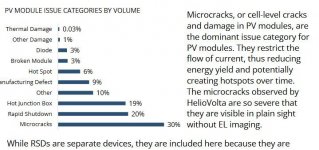letgomywago
Senior Member
- Location
- Washington state and Oregon coast
- Occupation
- residential electrician
If that's how they're designed for quick removal that'd be pretty coolCan't imagine my soaking wet firefighter gloves provides any voltage protection in the real world.
If your panels are in my way, might just fire up the 2000 GPM straight tip on the tower and wash them off the roof




